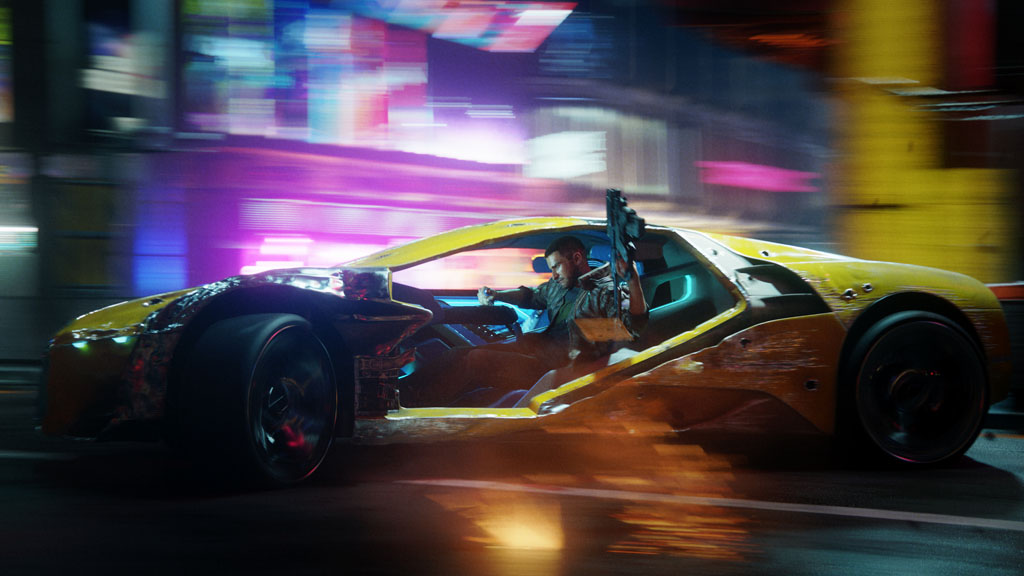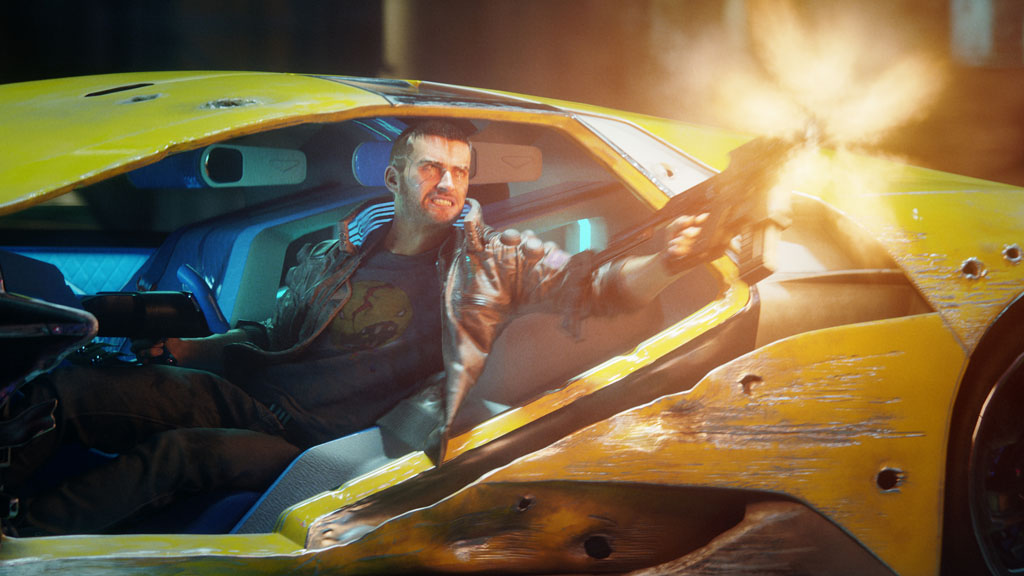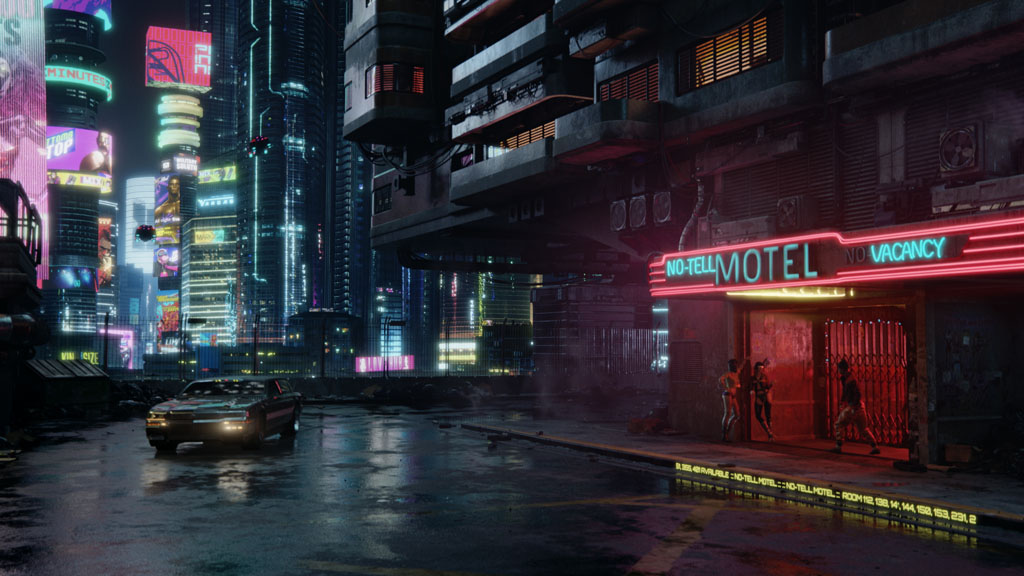

By TREVOR HOGG
The road to Night City began in 2012 and concluded at the end of 2020 when Cyberpunk 2077 was released by CD Projekt Red. As part of the publicity campaign, the Polish video game publisher and distributor partnered with Goodbye Kansas Studios to release a trailer at E3 and a television commercial in 2019. Players take the first-person perspective of a mercenary known as V as they attempt to steal a biochip, which is coveted by the various gangs inhabiting the megalopolis as it may hold the key to immortality.
“Most of our game cinematic projects follow the same routine, starting with extensive pitch work then moving through the steps of the production in close collaboration with the client,” states Fred Löfberg, Director of Goodbye Kansas Studios. “Both the E3 trailer and the television commercial ‘The Diner’ followed that same production flow. That said, Cyberpunk 2077 was and still is one of the most hyped games for the past few years, which put a certain pressure on to live up to expectations. CD Projekt Red had already released an amazing 48-minute trailer that gave a sense of the scope of the game and world-building. Our goal with both trailers was to capture the character and feel of the Night City location, just as much as the human characters.”
A meeting was held between the two companies where they discussed their collective strengths. “At Goodbye Kansas, we pride ourselves on our digital humans work,” remarks Löfberg. “CD Projekt Red wrote a script that both played to this strength and would best present the core strengths of the game. CD Projekt Red also shared some fresh concept art with us so we could create a trailer that worked to emulate how a mission could play out in the game, told in a cinematic narrative. Our next project, ‘The Diner,’ was designed to present a glimpse of the backstory of the character V, and insight into his character before he got ‘modified.’ It’s a story that players won’t meet in the actual game.”
“Cyberpunk 2077 was and still is one of the most hyped games for the past few years, which put a certain pressure on to live up to expectations. CD Projekt Red had already released an amazing 48-minute trailer that gave a sense of the scope of the game and world-building. Our goal with both trailers was to capture the character and feel of the Night City location, just as much as the human characters.”
—Fred Löfberg, Director, Goodbye Kansas Studios
Concept art and reference material was provided by CD Projekt Red. “Goodbye Kansas is an all-under-one-roof-facility,” adds Löfberg, “so we took care of all steps from that point on, including storyboards, boardomatics, previs, lookdev and concepts. As CD Projekt Red had shared a script, we further dived into the development of narrative through our storyboards. Finding the right beats, camera language and overall tempo for the trailer.”
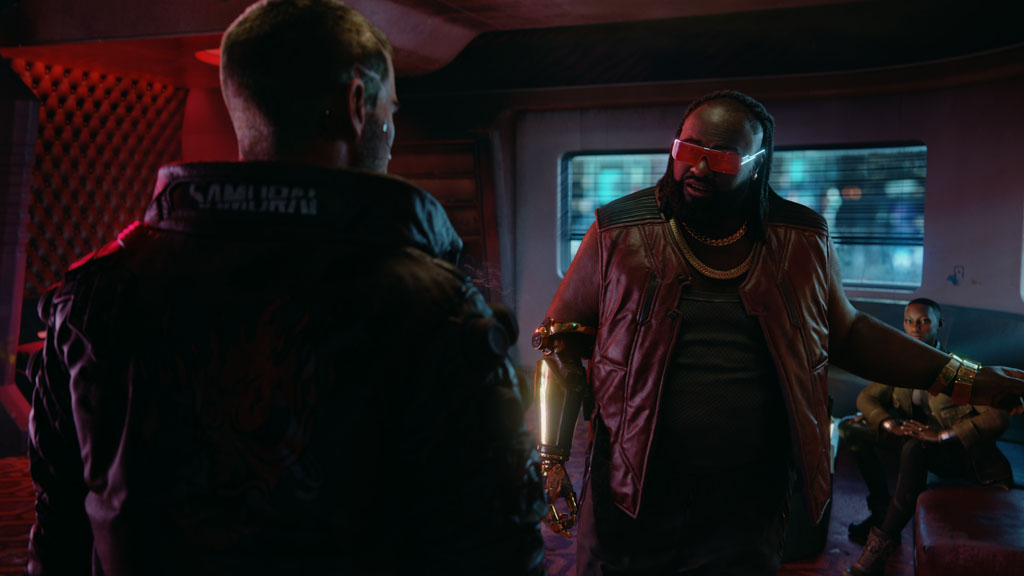
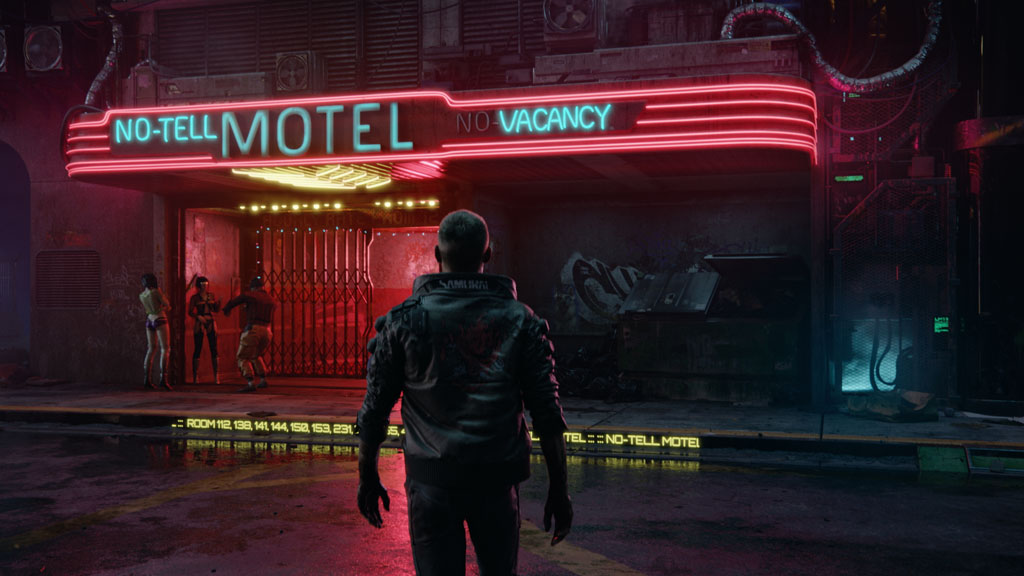
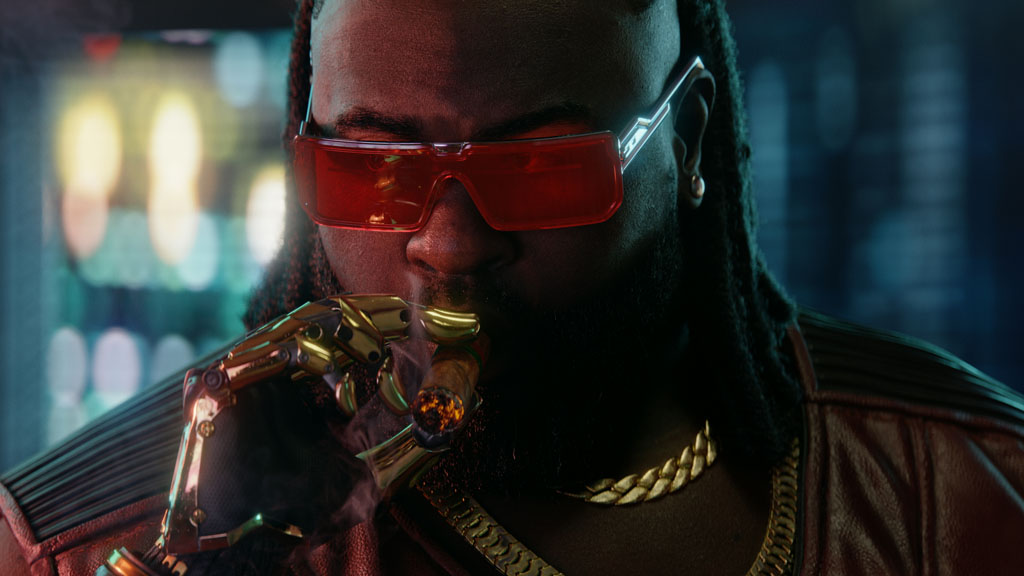
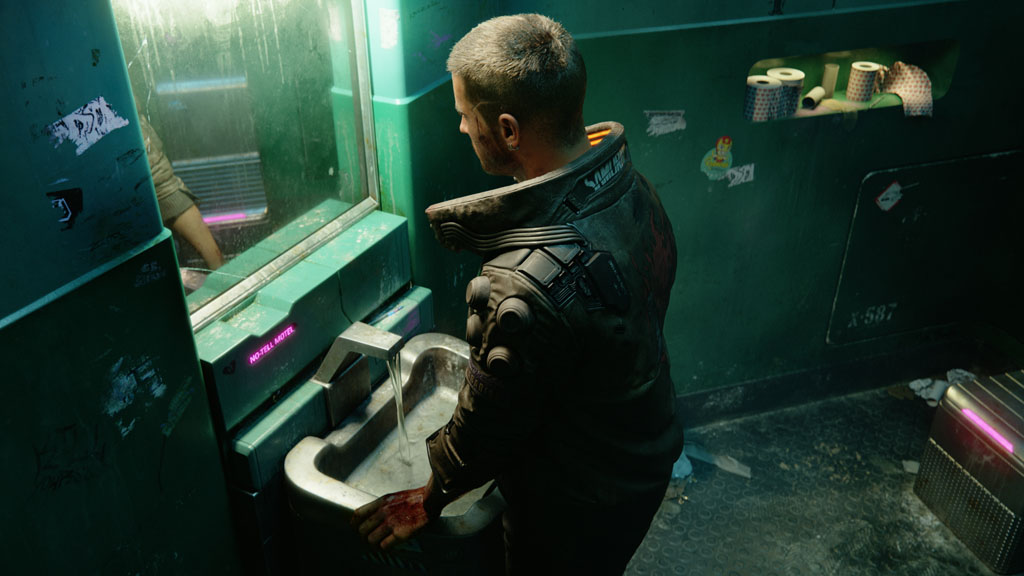
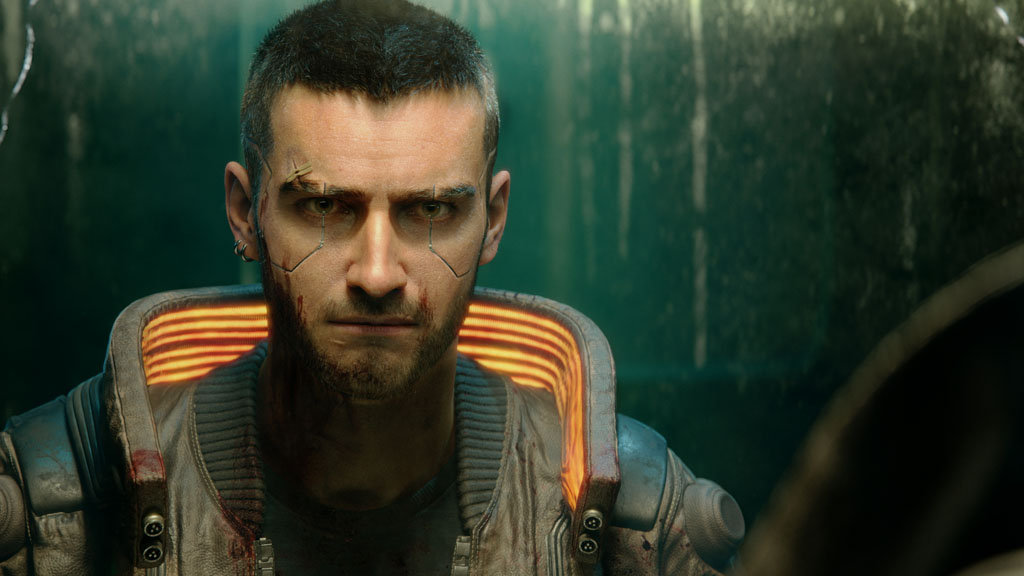
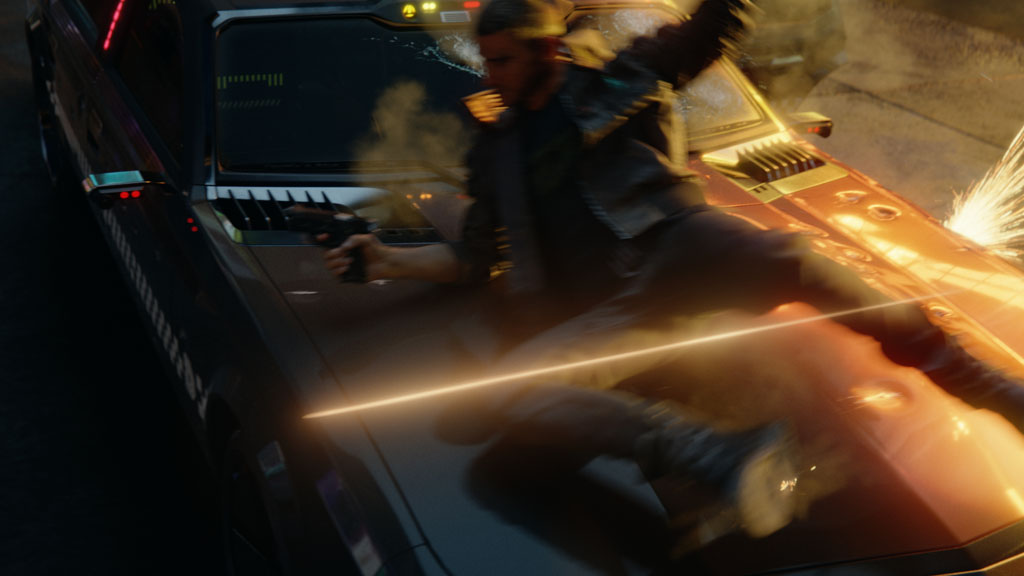
Five months were spent putting together the E3 trailer. “It was a tight project, but with great communication and collaboration with CD Projekt Red we created something that we are super proud of,” remarks Henrik Eklundh, Visual Effects Supervisor at Goodbye Kansas Studios. “They flew to our studio for a few days, both for the principal shoot and when we finalized the edit, which was great fun and also super important to ensure we could reach our production timeline.” Eklundh adds, “The most effective way of creating these trailers is to collaborate with the developer to make a slice of what the game will feel like in its tonality. Games take a long time to produce, to add all the necessary detail and fit it all together. The developer team might not have the possibility to assemble a really finished part until really late in the game production process. Creating a cinematic with selected few parts from the game and giving them the completed look intended for the finished game is fulfilling both for the developer to see and for players thirsting to see more from the game.”
“We completely immersed ourselves into the world of the game, and tried to use that feeling and make it more cinematic,” explains Mikael Widegren, Art Director at Goodbye Kansas Studios. “Working closely with CDPR was of course essential because after all they know this world better than anyone! We had lots of references. You could say that the Cyberpunk universe is a bit like Blade Runner mixed with sun-bleached California or Miami Vice. There are some Ghost in the Shell references in there too.”
“Creating a cinematic with selected few parts from the game and giving them the completed look intended for the finished game is fulfilling both for the developer to see and for players thirsting to see more from the game.”
—Henrik Eklundh, Visual Effects Supervisor. Goodbye Kansas Studios
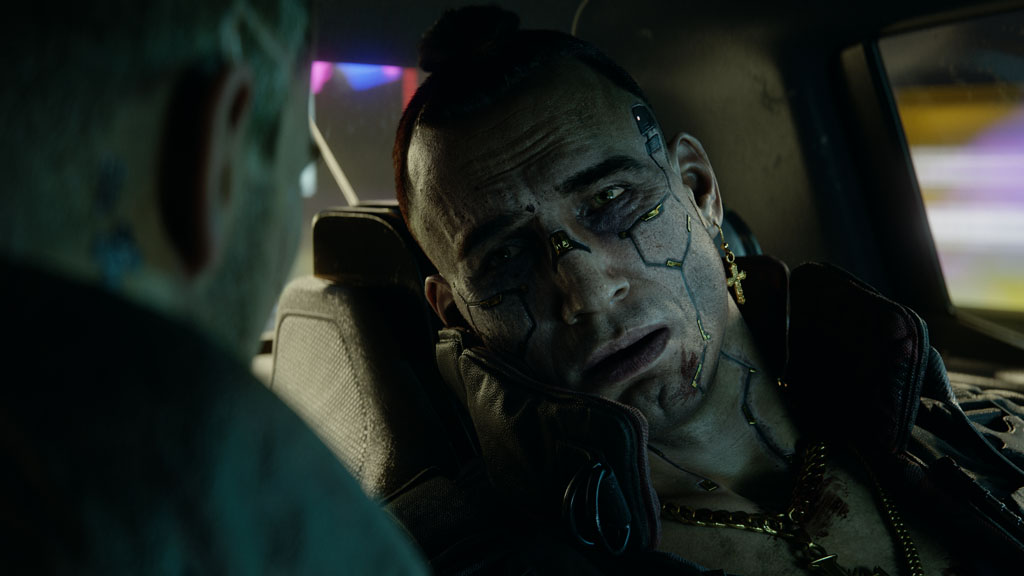
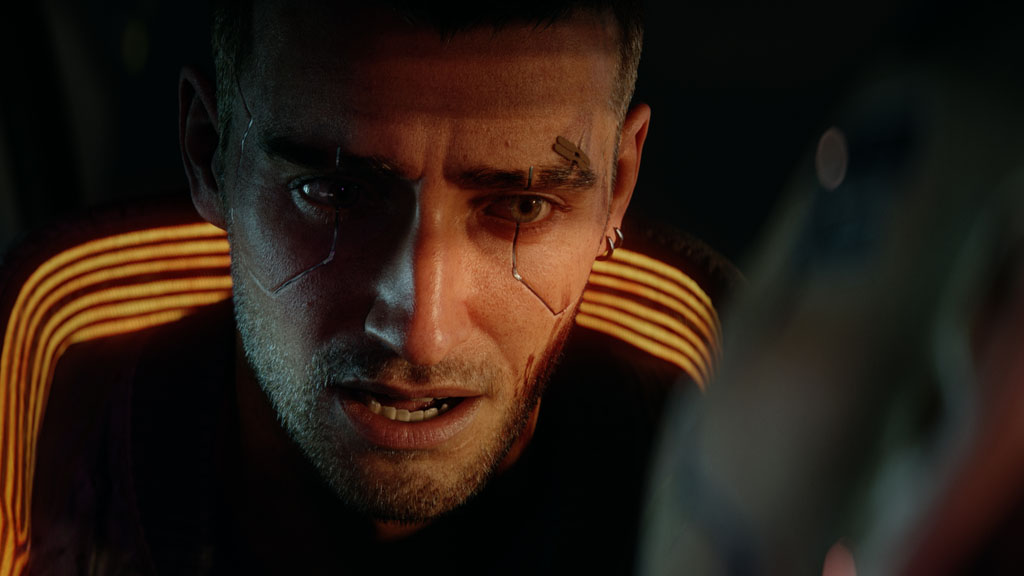
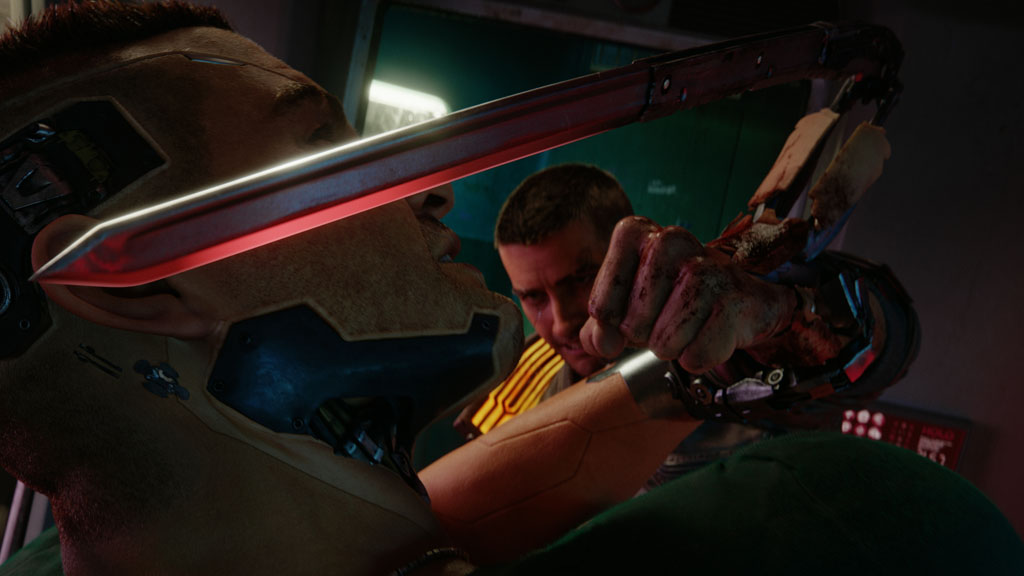
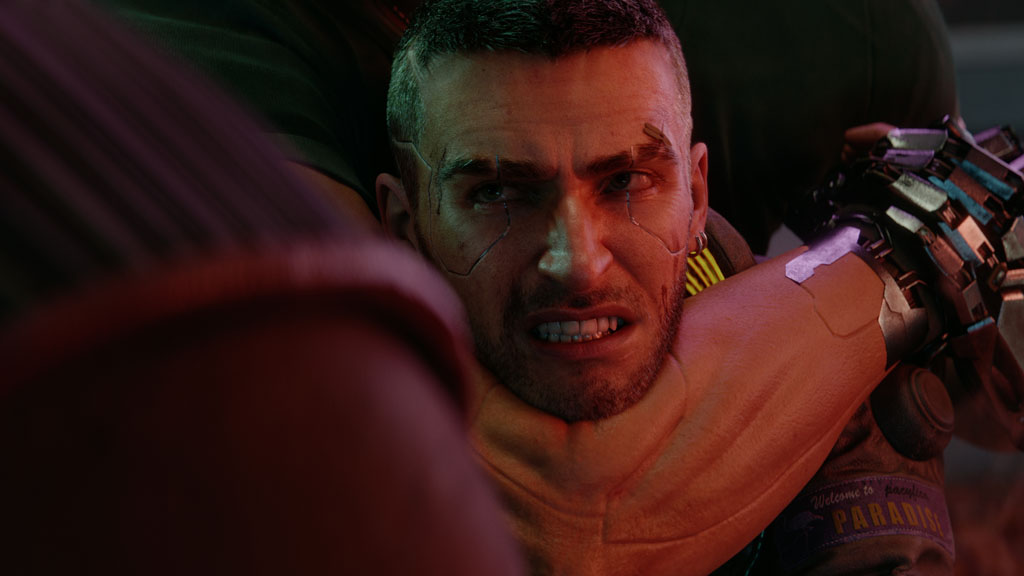
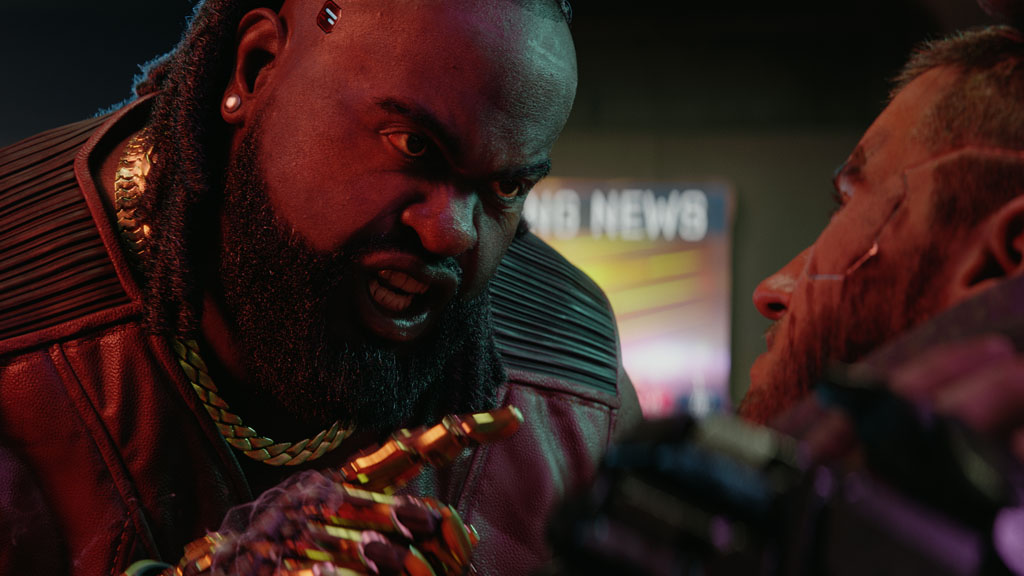
Among the assets provided by CD Projekt Red were weapons, vehicles and characters. “We then up-res’d them to fit the cinematic look we wanted to achieve, and added some of our own assets and environments,” states Jonas Skoog, Senior Character Artist at Goodbye Kansas Studios. “We have our own proprietary face rigs and a whole team dedicated to creating, developing and refining animation of faces. It’s one of the cornerstones of our ‘digital humans’ expertise.”
“We luckily have our own Performance Capture stage at Goodbye Kansas, so we used that both for previs and the principal shoot,” remarks Löfberg. “All the characters seen in our trailers, both acting and stunts, are retained from the actual performances, as with all of the game cinematics we produce. We cast performance actors for the principal mocap shoot to play out the parts on the stage, and used their performances to find the right timing and emotions in the scenes. When the edit was locked, we brought in voice actors that CDPR had cast and made an ADR shoot with them using our HMCs with our staff on location in both L.A. and London. After that, our facial animation team stepped in to merge the acting of the performance actors and the voice actors, blending all pieces together into the digital character to create a cohesive performance that felt natural. It’s a tricky process that needs lots of planning and thought behind every decision.”
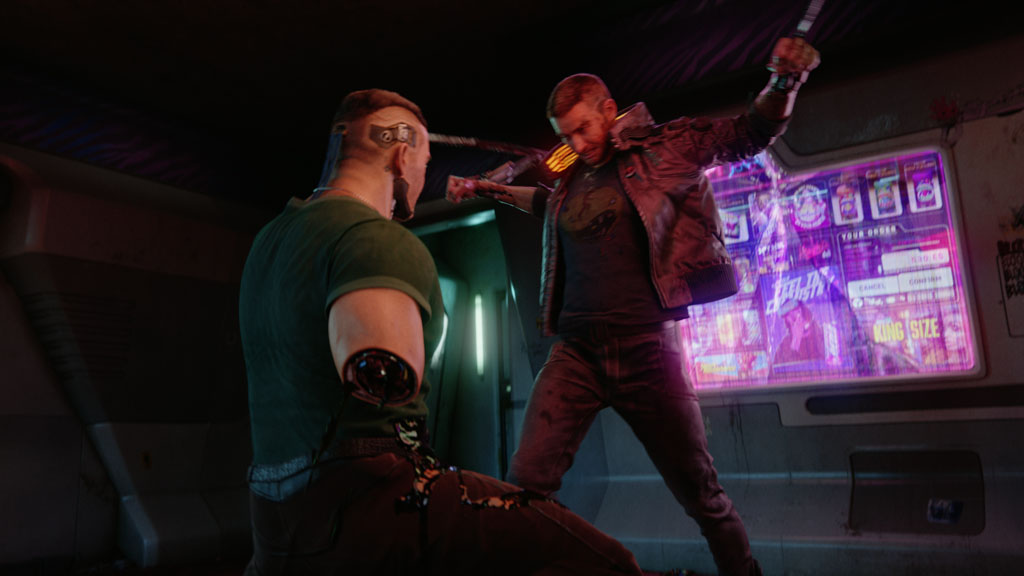

“We have our own proprietary face rigs and a whole team dedicated to creating, developing and refining animation of faces. It’s one of the cornerstones of our ‘digital humans’ expertise.”
—Jonas Skoog, Senior Character Artist, Goodbye Kansas Studios
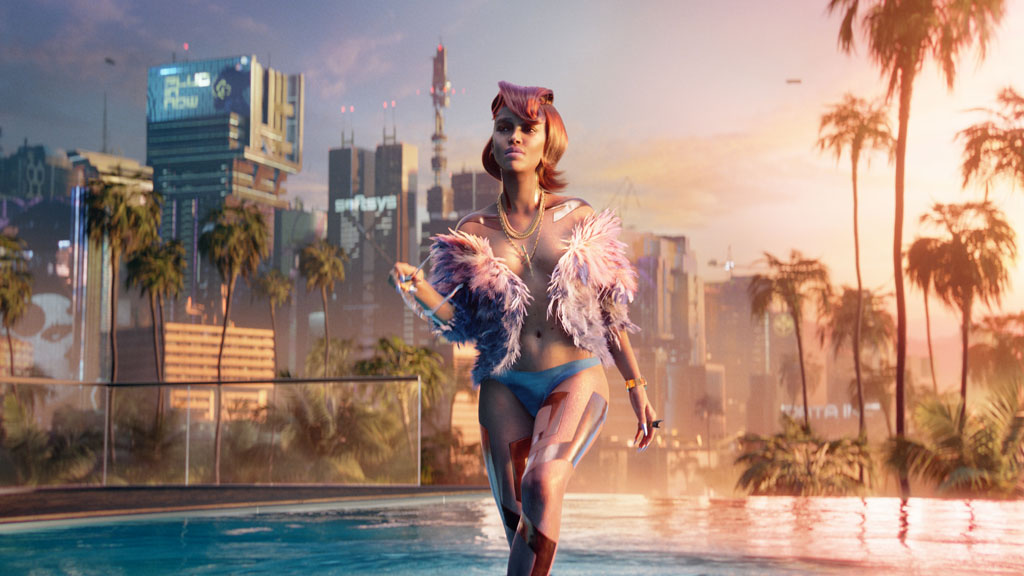
“We wanted to build a realistic world, so there were of course details that needed to be figured out,” explains Löfberg. “For example, how would V’s ‘arm blades’ fit into his arms when folded in? How big should they be? How should they be constructed? And how should they be animated to feel real? There were lots of those funny challenges along the way.” The effects elements were not extensive. The ones we did, we poured a lot of love into,” states Eklundh. “For example, the water cleaning up some of the blood on V’s hands turned out really great. The cigar smoke from Dex also needed some intricate detail to sell it, as well as some of the impale action as V fought back. We couldn’t use blood, so we had to pour some oil out of that guy attacking V.”
The flashbacks had to feel cohesive and not disjointed. “We decided to focus heavily on V as a character since he is the center of the narrative and the one that drives the story in the E3 trailer,” remarks Löfberg. “We wanted to get in touch with his emotions, and letting a character face a mirror is a classic but effective way to convey their inner thoughts. Sound design was also vital. Already from the start we knew we wanted a specific sound effect to go along with the transitions to flashbacks. For example, in the first flashback, I knew that beginning to hear gun sound effects when V is in front of the mirror would draw in the viewer. Contrasting that with a dynamic, high-octane shot with V sliding over a car, bullets flying through the air, and a daring escape gave for an intense, impactful time-jump transition.”
A big reveal occurs at the end of the E3 trailer with Keanu Reeves making an appearance as Johnny Silverhand. “Yes, it was fun,” admits Skoog. “And it was a miracle that it didn’t leak! We learned he was going to be part of the show a few months into the project and it had such an exciting impact on the production.”
There was a lot of pressure on making the moment as dramatic as possible. “It was one of the most nerve-racking experiences in my life, but also one of the best,” states Löfberg. “I was there at E3 during the Microsoft press conference with the client when the trailer premiered. Total silence fell on 7,000 people and then it just exploded. It was awesome hearing people cheer and giving standing ovations.” Eklundh was equally pleased with the public reaction. “We had a lot of different artists chiming in on that shot [with Reeves] to make it great, and to see how the reaction in the world went when they saw him just blew my mind! Also, the character work for Dex winning the VES award when we had such a talented team working together on him felt great. It was such a great collaboration with CDPR on creating that unique character.”
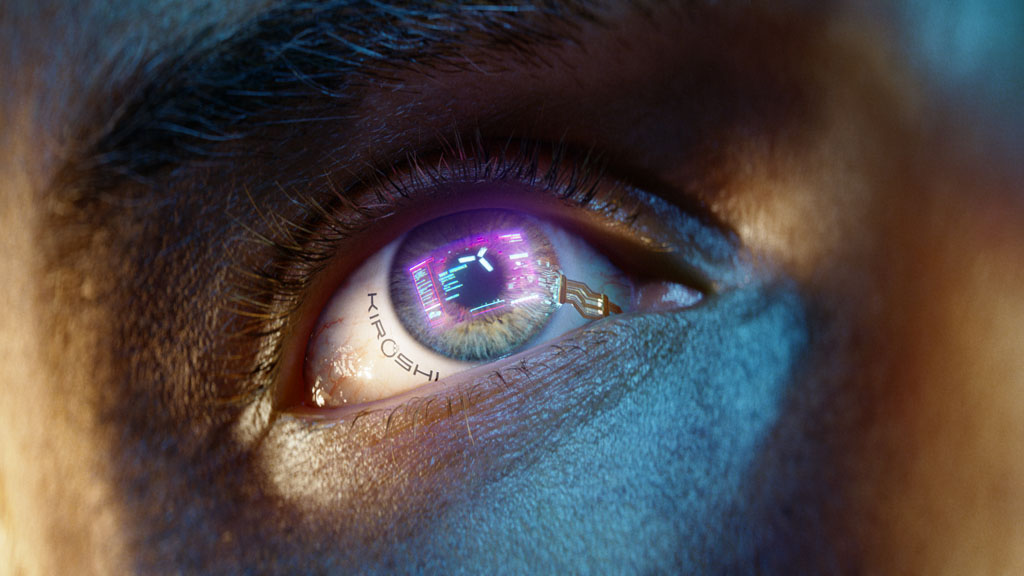
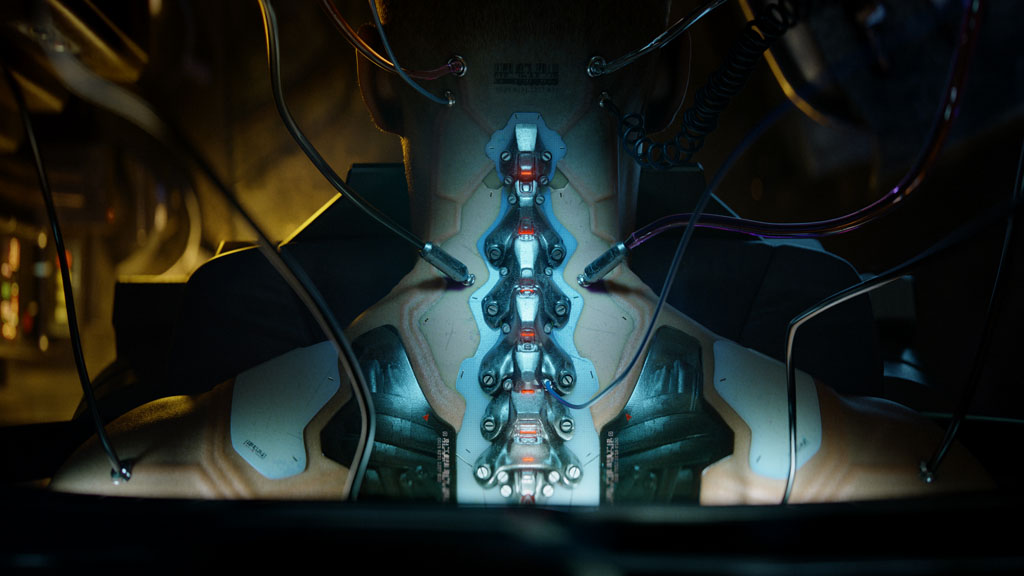
“At Goodbye Kansas, we pride ourselves on our digital humans work. CD Projekt Red wrote a script that both played to this strength and would best present the core strengths of the game. CD Projekt Red also shared some fresh concept art with us so we could create a trailer that worked to emulate how a mission could play out in the game, told in a cinematic narrative.”
—Fred Löfberg, Director, Goodbye Kansas Studios
